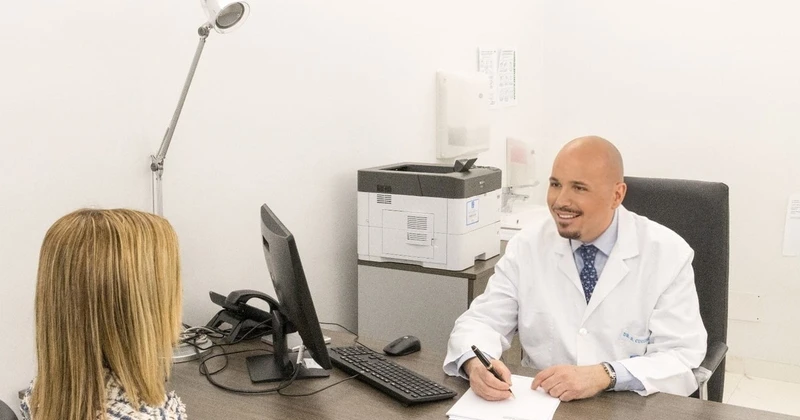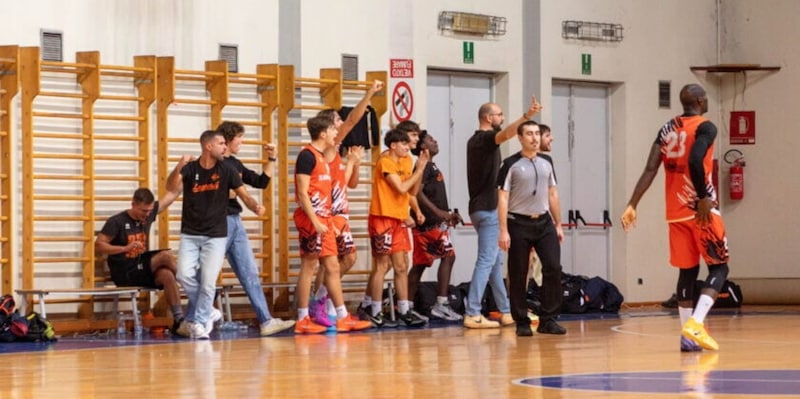
Diastasi dei retti addominali: patologia da conoscere e curare
La diastasi dei retti addominali è una condizione ancora troppo spesso sottovalutata o confusa con un semplice inestetismo della pancia. In realtà si tratta di una vera e propria patologia che può compromettere postura, stabilità del core e qualità della vita. Dalla diagnosi ai trattamenti, fino alle più innovative tecniche chirurgiche mini-invasive, la ricerca scientifica ha fatto passi da gigante. Con le nuove metodiche, oggi è possibile non solo correggere il difetto funzionale, ma anche migliorare in modo significativo benessere e autostima dei pazienti. Un tema di grande attualità che riguarda migliaia di persone, soprattutto donne dopo la gravidanza, ma non solo. Il Dr. Salvatore Cuccomarino, specialista in chirurgia mininvasiva della diastasi dei retti e delle ernie addominali, fa chiarezza su questa patologia e sulle soluzioni. Che cos'è esattamente la diastasi dei retti addominali e in che modo si manifesta nel corpo? La diastasi dei retti addominali è una condizione in cui i due muscoli retti dell'addome – quelli che formano la classica "tartaruga", per intenderci – si allontanano tra loro, lasciando uno spazio anomalo al centro della pancia. Questo succede perché la linea alba, la struttura fibrosa che normalmente li tiene uniti, si indebolisce e si assottiglia. Quando ciò avviene, la parete addominale perde "compattezza" e la pancia appare sporgente o gonfia, soprattutto quando la persona si alza da sdraiata. In molti casi compare una sorta di gobba al centro dell'addome che le pazienti chiamano "pinna", proprio perché ricorda la pinna di un pesce che si solleva in mezzo alla pancia. È un problema molto frequente nelle donne dopo la gravidanza, ma può colpire anche gli uomini, soprattutto i bodybuilder, chi è in sovrappeso e chi ha più di cinquant'anni. La diastasi è un problema solo estetico o può comportare anche conseguenze funzionali e di salute? Molti pensano che sia soltanto un difetto estetico, ma non è così. La diastasi può causare disturbi funzionali anche molto seri. Uno dei problemi principali è il mal di schiena, che deriva dalla perdita di stabilità del "core addominale", cioè di quell'insieme di muscoli che sostiene e stabilizza la colonna vertebrale e il bacino, di cui i muscoli della parete addominale, e in particolare i retti, costituiscono una parte importante. La diastasi può inoltre causare una sensazione di debolezza generale dell'addome, che rende difficili e dolorosi anche movimenti semplici, e può favorire la comparsa di problemi digestivi e di reflusso gastroesofageo. Tra l'altro, il mio gruppo è stato il primo al mondo a dimostrare scientificamente la correlazione tra diastasi e reflusso. Abbiamo raccolto e analizzato i dati di centinaia di pazienti e stiamo per pubblicare uno studio internazionale che conferma come la correzione chirurgica della diastasi possa portare a un netto miglioramento dei sintomi da reflusso. Un altro sintomo importante è l'incontinenza urinaria da sforzo, che colpisce circa il 50% delle donne con diastasi addominale. Nel mio libro "New Concepts in Diastasi Recti Surgery", pubblicato da Springer Nature all'inizio del 2025, sottolineo come la diastasi debba essere considerata a tutti gli effetti una patologia, non solo un problema estetico. Quali sono i metodi più affidabili per diagnosticare la diastasi in modo preciso? La diagnosi deve iniziare sempre con una visita accurata, durante la quale il chirurgo valuta la distanza tra i muscoli retti. L'ecografia della parete addominale è un esame semplice e non invasivo, ma non sempre è precisa, sottostimando spesso l'ampiezza della diastasi e non riuscendo ad individuare le piccole ernie della linea alba, che sono presenti in oltre il 95% dei pazienti. Per questo motivo, per me la diagnosi resta essenzialmente clinica, basata sull'esperienza dello specialista e sulla valutazione diretta del paziente. Quando ho dei dubbi, preferisco chiedere una TC della parete addominale, che offre una visione completa e dettagliata, utile anche per programmare al meglio l'intervento. Un piccolo consiglio per chi sospetta di avere una diastasi: da sdraiati, piegando leggermente la testa in avanti, se al centro della pancia compare una "cresta" o una protuberanza – la famosa "pinna" – è molto probabile che si tratti proprio di una diastasi. Esistono trattamenti non chirurgici che possono aiutare a migliorare la situazione? Nei casi lievi, soprattutto subito dopo la gravidanza, alcuni esercizi mirati e ben eseguiti, seguiti da un fisioterapista esperto, possono rinforzare la muscolatura e alleviare i sintomi, ma purtroppo non sono sufficienti a ricostruire la linea alba. Quando la diastasi supera i tre centimetri di larghezza, non esistono misure fisioterapiche in grado di chiuderla o guarirla: l'unico trattamento realmente efficace e definitivo resta quello chirurgico. È importante che i pazienti lo sappiano, per evitare illusioni: creme, pancere o esercizi da soli non possono risolvere una diastasi marcata. La fisioterapia, comunque, mantiene un ruolo centrale nella riabilitazione dei muscoli addominali dopo l'intervento chirurgico. Quali sono gli interventi chirurgici per la correzione della diastasi dei retti? Oggi abbiamo diverse opzioni chirurgiche. L'addominoplastica tradizionale, che un tempo era la scelta più comune, ha attualmente indicazioni molto limitate: si dovrebbe eseguire solo nei pazienti che hanno un addome pendulo o un importante eccesso di pelle. È una procedura utile in questi casi, ma anche complessa e gravata da un numero significativo di complicanze, come sieromi, ematomi, infezioni e problemi di cicatrizzazione, oltre a un rischio non trascurabile di recidiva della diastasi, che in alcuni studi arriva fino al 40%. Abbiamo quindi la chirurgia laparoscopica con posizionamento di una rete intraddominale. Questa tecnica è meno invasiva rispetto all'addominoplastica, ma la rete rimane a contatto diretto con gli organi interni, con possibili problemi di aderenze che nel tempo possono causare complicanze temibili ed anche potenzialmente fatali, come l'erosione o l'occlusione intestinale. Altre tecniche, come la chirurgia robotica o la TARUP, vengono utilizzate in molti centri, ma si tratta di approcci molto più demolitivi. Queste tecniche prevedono l'apertura del peritoneo e della fascia posteriore dei muscoli retti, creando un trauma chirurgico maggiore e, paradossalmente, risultando meno efficaci: infatti, permettono una sutura ottimale della diastasi solo dalla regione dello sterno fino all'ombelico, lasciando scoperta la parte sotto-ombelicale, che invece è particolarmente importante, soprattutto nelle diastasi post-gravidiche, dove il cedimento della linea alba interessa spesso proprio quella zona. Nel 2017 ho introdotto in Europa la REPA (o SCOLA, o ENDOR, come la chiamano i chirurghi anglosassoni), una tecnica mininvasiva che ha rivoluzionato il trattamento della diastasi. Con tre piccole incisioni appena sopra il pube è possibile ricostruire la linea alba senza utilizzare una rete intraddominale. Il recupero è rapido, il dolore è minimo e il risultato estetico eccellente. Attualmente, con oltre 500 pazienti operati, la mia è una delle principali esperienze al mondo di REPA. Successivamente, due chirurghi argentini, il mio amico Ezequiel Palmisano e Guillermo Di Blasio, chirurgo plastico, hanno ideato la MILA, Minimally Invasive Lipo-Abdominoplasty, una naturale evoluzione della REPA che integra anche una componente estetica avanzata. Io sono stato il primo a eseguire la MILA in Europa, nel 2022, e oggi con oltre 130 pazienti operati ho la più grande casistica europea di questo intervento. Vantaggi e svantaggi delle diverse tecniche L'addominoplastica permette di rimuovere anche la pelle in eccesso, ma lascia una cicatrice estesa, richiede tempi di recupero lunghi ed è associata a un rischio significativo di complicanze e recidive. La chirurgia laparoscopica con rete è più mini-invasiva rispetto all'intervento tradizionale, ma lascia la rete a contatto con i visceri, con il rischio di gravi problemi a medio-lungo termine. Altri interventi, come la tecnica robotica o le tecniche laparoscopiche extraperitoneali come la TARUP, pur mantenendo la mininvasività sono più demolitivi e meno efficaci della REPA, soprattutto per il trattamento della porzione sottoombelicale della diastasi, avendo spesso costi molto più elevati. La REPA rappresenta oggi un gold standard: non utilizza reti intraddominali, è poco dolorosa, consente di riparare la diastasi per tutta la sua estensione, garantisce un recupero rapido e offre ottimi risultati estetici. L'unico limite è che non rimuove la pelle in eccesso, ma in alcuni casi può essere combinata con procedure estetiche dedicate, come avviene per la MILA. Quest'ultima è la tecnica più evoluta e completa: oltre a correggere la diastasi, permette una liposcultura avanzata, anche ad alta definizione, dell'addome, unendo il beneficio funzionale a quello estetico. È una tecnica raffinata, che richiede grande esperienza da parte del chirurgo. Com'è nata la REPA e come è arrivata nel nostro Paese? La REPA è nata in Argentina nel 2014, grazie al "genio" del chirurgo Derlin Juarez Muas, da cui io l'ho imparata. Nel 2017, come dicevo, ho avuto l'onore di eseguire la prima REPA in Europa. Da allora il mio centro è diventato un punto di riferimento internazionale, a cui afferiscono pazienti da tutta Europa. Che tipo di cambiamenti positivi si possono aspettare nella vita quotidiana di chi affronta e risolve questa condizione? Il miglioramento della qualità di vita dopo la correzione della diastasi è stato oggetto di uno studio che ho pubblicato nel 2022 su Surgical Endoscopy, la principale rivista internazionale dedicata alla chirurgia mini-invasiva. Abbiamo inviato un questionario validato sulla qualità della vita ai primi 172 pazienti operati con tecnica REPA e i risultati sono stati estremamente positivi. La maggior parte dei pazienti ha riferito una riduzione netta del dolore e del senso di fastidio addominale, con un ritorno rapido alle normali attività quotidiane. Abbiamo osservato anche un notevole miglioramento della postura, della stabilità del core addominale e del mal di schiena. Circa l'80% dei pazienti, ad un mese dall'intervento, non ha più sintomi e molti di essi riprendono l'attività fisica già una-due settimane dopo l'intervento. I questionari di soddisfazione hanno mostrato un incremento significativo della qualità di vita, con miglioramenti statisticamente rilevanti in tutti i parametri analizzati. Non si tratta solo di benefici fisici: molti pazienti hanno riportato un impatto psicologico profondo, ritrovando fiducia, autostima e sicurezza nel proprio corpo. Questi dati confermano ciò che vedo quotidianamente nella mia pratica clinica: correggere la diastasi non significa solo migliorare l'aspetto estetico dell'addome, ma anche restituire salute, benessere e qualità di vita, grazie ad una tecnica chirurgica che è oggi la più avanzata e meno traumatica disponibile. Lei dove riceve, Dottore? Ricevo in diverse città, per essere il più vicino possibile ai miei pazienti. A Torino visito e opero presso il Centro Medico Deda Med, il CIDIMU e la LARC. A Chivasso ricevo allo Studio De Medica. A Cuneo sono presente al CIDIMU, a Biella al Poliambulatorio San Biagio e a Milano presso il Centro Medico Visconti di Modrone. A breve sarò presente anche a Roma.



